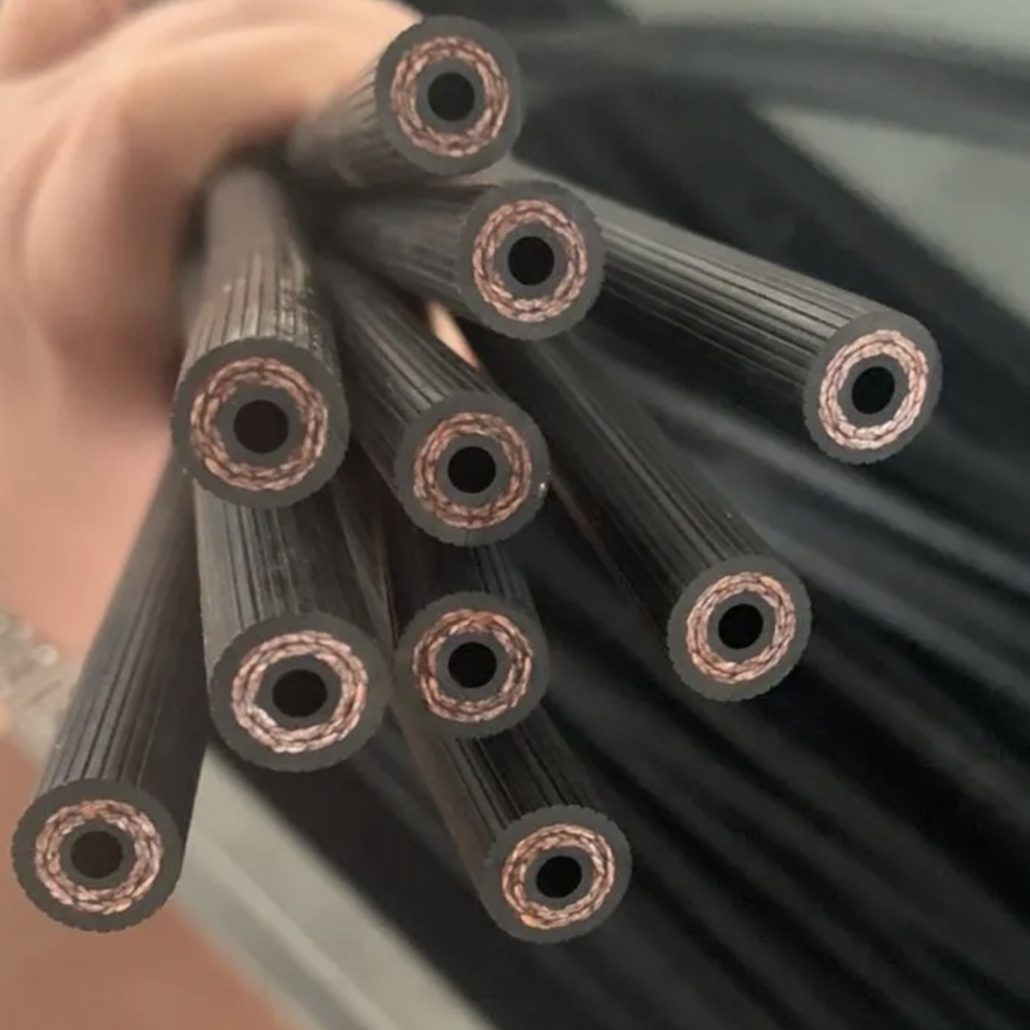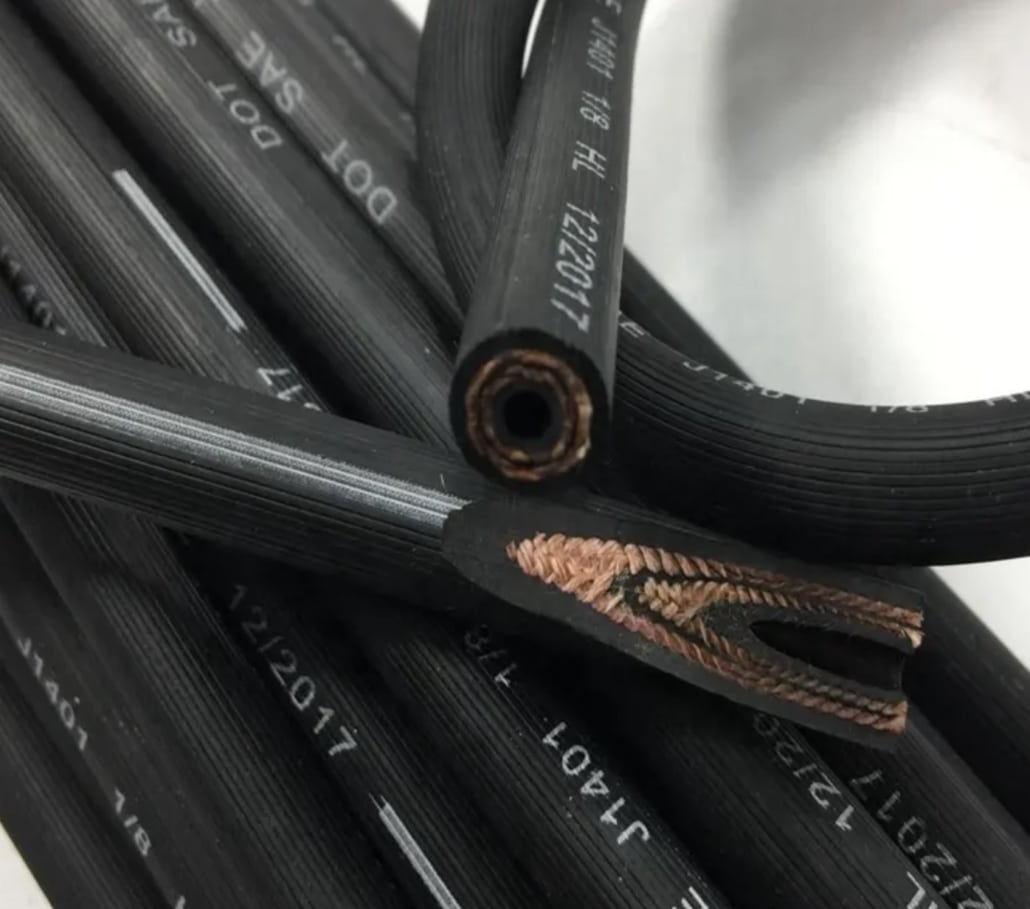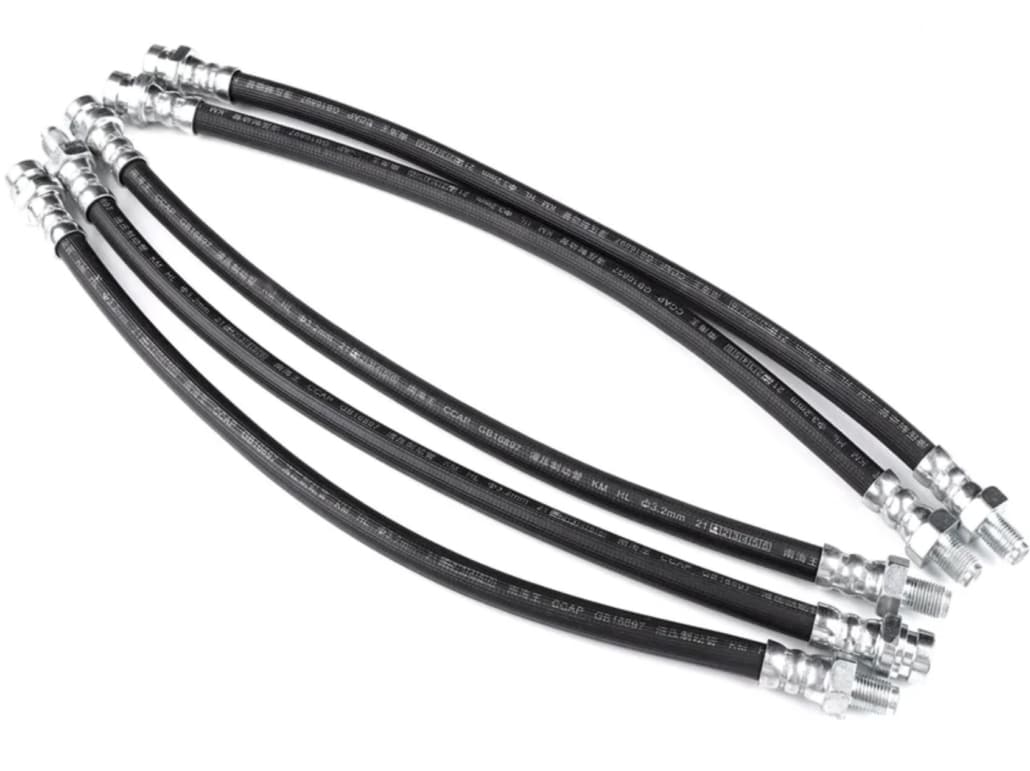Rubber Brake Hose SAE J1401:
—–Enhancing Automobile Safety with Flexible Rubber Hose
- Introduction: The Importance of Brake Hoses
- Understanding SAE J1401 Standards
- Construction of Rubber Brake Hoses
- Functionality and Operation of SAE J1401 Hoses
- Benefits of Rubber Brake Hose SAE J1401
- Proper Maintenance and Inspection
- Common Issues and Troubleshooting
- Choosing the Right Brake Hose for Your Vehicle
- Installation Guidelines for Rubber Brake Hoses
- Ensuring Compliance with Safety Regulations
- Frequently Asked Questions (FAQs)
1. Introduction: The Importance of Brake Hoses
When you step on the brake pedal of your automobile, it initiates a complex process that eventually leads to the vehicle coming to a stop. Brake hoses are an integral part of this process, as they transfer the hydraulic pressure generated by the brake fluid to the braking mechanisms of the wheels. The Rubber Brake Hose SAE J1401, specifically designed to meet industry standards, plays a vital role in ensuring the efficient transmission of hydraulic pressure, contributing to safe and reliable braking.

Rubber Brake Hose SAE J1401
2. Understanding SAE J1401 Standards
SAE J1401 is a set of industry standards developed by the Society of Automotive Engineers (SAE) to establish the performance and quality requirements for hydraulic brake hoses used in automobiles. These standards define the design, construction, and performance criteria that brake hoses must meet to ensure consistent and reliable braking performance across different vehicle models and manufacturers.
3. Construction of Rubber Brake Hoses
Rubber brake hoses are engineered using high-quality materials to withstand the demanding conditions of the braking system. They typically consist of multiple layers that provide strength, flexibility, and resistance to heat, corrosion, and abrasion. The innermost layer is composed of a synthetic rubber compound that is compatible with brake fluid, preventing any leaks or contamination. Surrounding this inner layer are reinforcement layers made of braided or spiraled fibers, which enhance the hose’s strength and stability. Finally, an outer cover layer protects the hose from external elements and provides additional durability.

Rubber Brake Hose
4. Functionality and Operation of SAE J1401 Hoses
The Rubber Brake Hose SAE J1401 serves as a vital link between the master cylinder and the wheel cylinders or calipers in a hydraulic braking system. When you apply pressure to the brake pedal, the master cylinder exerts hydraulic force, which is transmitted through the brake fluid to the brake hoses. These hoses then deliver the pressure to the braking mechanisms at each wheel, causing the brake pads or shoes to engage with the rotors or drums and initiate the braking action. The flexibility of the rubber brake hose allows for smooth and responsive brake operation, ensuring precise control and stopping power.
5. Benefits of Rubber Brake Hose SAE J1401
The utilization of Rubber Brake Hose SAE J1401 offers several advantages for automobile braking systems:
- Enhanced Safety: The SAE J1401 standard ensures that the brake hoses meet stringent safety requirements, providing reliable braking performance and contributing to overall vehicle safety.
- Flexibility and Durability: The flexible nature of rubber brake hoses allows them to adapt to various vehicle configurations, ensuring optimal fitment and compatibility. Moreover, their robust construction makes them resistant to vibrations, impacts, and environmental factors, ensuring long-lasting durability.
- Heat and Chemical Resistance: Rubber brake hoses are designed to withstand the high temperatures generated during braking and the corrosive properties of brake fluid, preventing premature degradation or failure.
- Smooth Brake Operation: The flexibility of rubber brake hoses ensures a smooth and responsive braking experience, allowing for precise modulation of braking force and improved vehicle control.
6. Proper Maintenance and Inspection
To ensure the optimal performance and longevity of your Rubber Brake Hose SAE J1401, regular maintenance and inspection are essential. Here are a few maintenance tips to keep in mind:
- Regularly check the condition of the brake hoses for signs of wear, cracks, bulges, or leaks.
- Inspect the fittings and connections for tightness and proper sealing.
- Follow the manufacturer’s recommended brake fluid change intervals to prevent fluid contamination and degradation.
- During routine brake service, ensure that the brake hoses are properly routed and secured to avoid interference with moving parts or excessive tension.
7. Common Issues and Troubleshooting
While rubber brake hoses are designed to be reliable and durable, certain issues may arise over time. Here are a few common problems and their potential causes:
- Brake Fluid Leakage: Leakage can occur due to damaged or worn-out hose connections, seals, or fittings. Inspect the hoses and connections for any signs of leakage, and replace damaged components promptly.
- Brake Hose Swelling: Swelling can result from prolonged exposure to incompatible brake fluids or certain chemicals. Use only the recommended brake fluid and avoid contamination to prevent hose swelling.
- Cracking or Perishing: Over time, rubber brake hoses may develop cracks or perish due to aging, exposure to harsh environmental conditions, or contact with corrosive substances. Regular inspection and replacement of worn-out hoses are crucial to avoid potential failure.
- Brake Hose Blockage: Blockage can occur due to debris or contaminants entering the brake system. Flushing the system and ensuring clean brake fluid circulation can help prevent blockages and maintain proper braking performance.
8. Choosing the Right Brake Hose for Your Vehicle
When replacing or upgrading your brake hoses, it is essential to choose the right ones for your vehicle. Consider the following factors:
- Compatibility: Ensure that the brake hoses meet the SAE J1401 standards and are specifically designed for your vehicle make and model.
- Quality and Certification: Opt for hoses manufactured by reputable companies with a proven track record of producing high-quality brake components. Look for certifications such as DOT (Department of Transportation) approval.
- Installation Ease: Select brake hoses that are easy to install and compatible with your vehicle’s braking system configuration.
- Performance and Longevity: Consider the hose’s durability, flexibility, and resistance to heat, corrosion, and wear to ensure long-lasting performance.
9. Installation Guidelines for Rubber Brake Hoses
To ensure proper installation of your Rubber Brake Hose SAE J1401, follow these general guidelines:
- Carefully remove the old brake hoses, taking note of their routing and connections.
- Clean the brake line fittings and inspect them for any signs of damage or corrosion. Replace if necessary.
- Install the new brake hoses, ensuring that they are properly aligned and securely connected to the brake line fittings and calipers/wheel cylinders.
- Use the appropriate torque specifications when tightening the fittings to prevent leaks or damage.
- Verify that the brake hoses are properly routed, avoiding any sharp bends or areas of excessive tension.
- Bleed the brake system to remove any air bubbles and ensure proper brake fluid circulation.
Rubber Brake Hose fittings
10. Ensuring Compliance with Safety Regulations
When it comes to the safety of your vehicle and its occupants, compliance with safety regulations is of utmost importance. The Rubber Brake Hose SAE J1401 is designed to meet the stringent requirements outlined by industry standards. By ensuring that your brake hoses adhere to these standards, you can have peace of mind knowing that your vehicle’s braking system is reliable and safe.
11. Frequently Asked Questions (FAQs):
Q: Can Rubber Brake Hose SAE J1401 be used for all types of vehicles?
Rubber Brake Hose SAE J1401 is designed to meet the needs of various automobile makes and models. However, it’s essential to verify compatibility with your specific vehicle before installation.
Q: What are the advantages of using Rubber Brake Hose SAE J1401 over other types of brake hoses?
Rubber Brake Hose SAE J1401 offers advantages such as flexibility, durability, and compatibility with brake fluid, ensuring optimal brake performance and safety.
Q: Are there any maintenance tips for maximizing the lifespan of Rubber Brake Hose SAE J1401?
Regularly inspect the brake hoses for signs of wear or damage, avoid contamination of brake fluid, and follow recommended maintenance intervals to ensure longevity and performance.
Q: How often should I inspect my rubber brake hoses?
Regular inspection is recommended, ideally during routine maintenance or before long trips. Check for signs of wear, damage, or leaks.
Q: Can I replace the brake hoses myself, or should I seek professional help?
While it is possible to replace brake hoses yourself, it is recommended to seek professional assistance, especially if you lack experience or are unsure of the process.



 sunhose
sunhose